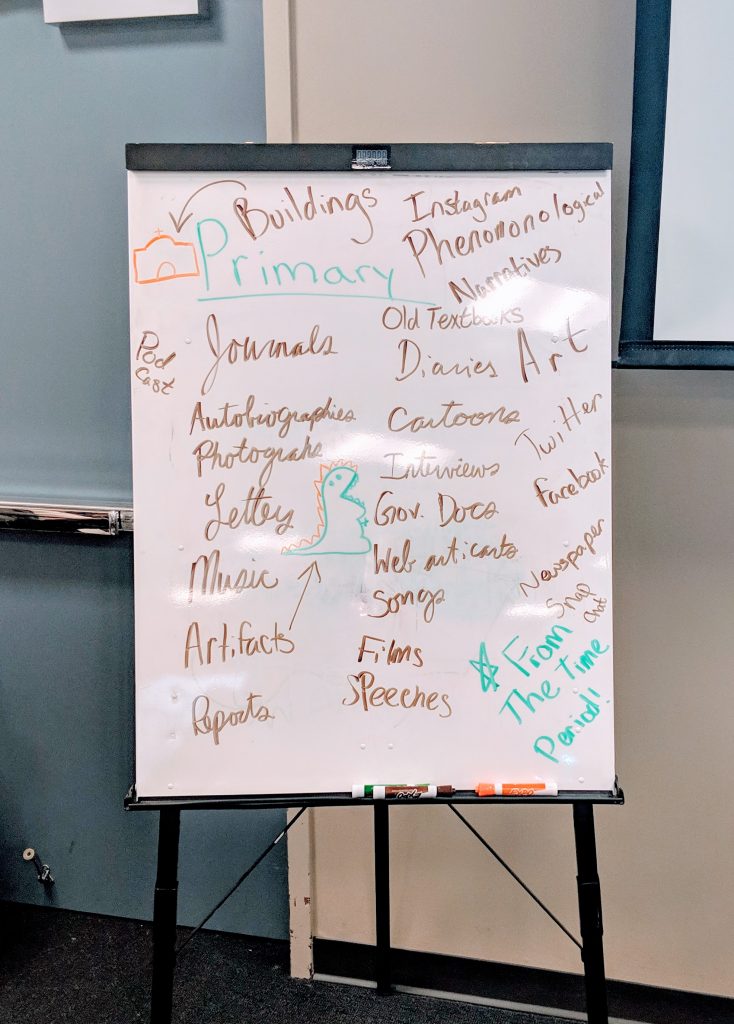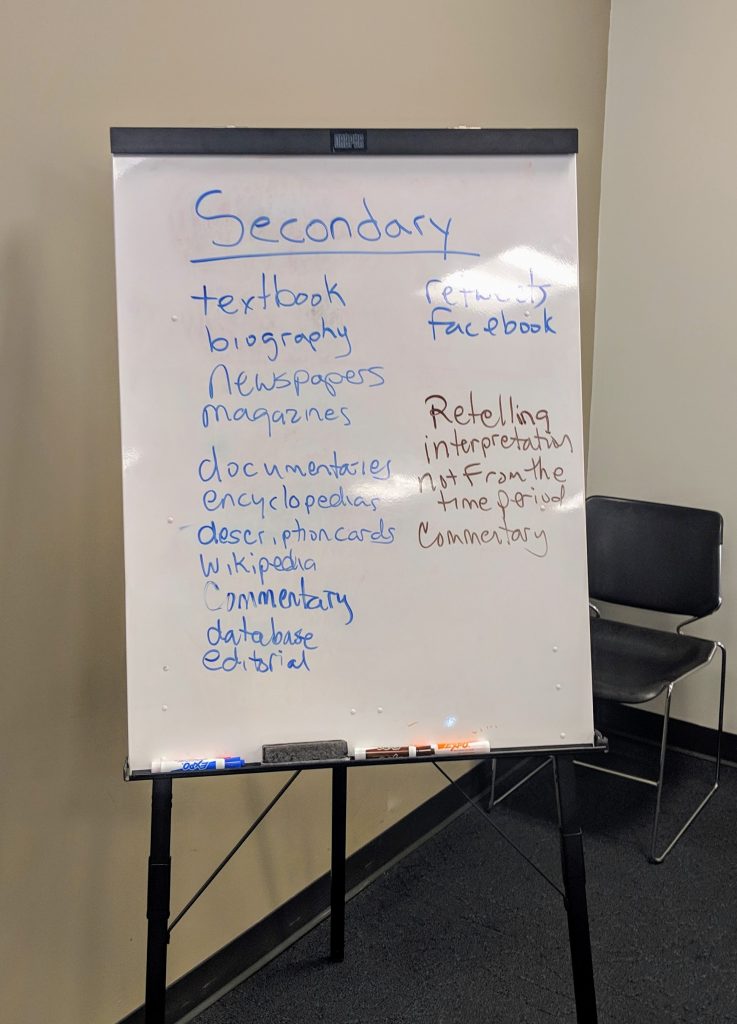You know that all-too-familiar silence after asking a question in the classroom, where you are just pleading with someone, anyone to respond? Yeah, me too. It especially bugs me when I KNOW students have prepared for class and have things to say. I’ve always aimed to have every student speak in some way in every class, even if it’s just with a partner, and here are a few tricks I use to boost engagement in smaller classes (classes under 30 students)
- Stand up, sit down: For a question that has speedy answers (think: brainstorming a list), ask the class to stand. Pose the question, and after each student answers, they can sit down. This works well to generate lists or brainstorm ideas. (NOTE: be attentive to those with physical disabilities or limitations that might make standing difficult for them). Last weekend, I sat in on a workshop for K-12 educators. The facilitator generated two lists – one for types of primary sources, one for secondary sources. Two participants were given whiteboard markers and assigned to one of the lists. Participants contributed an example of a primary or secondary source, the writers wrote down the examples, and we quickly moved throughout the room as people shared ideas. This would work well for quickly reviewing readings, class topics, or other things that all students could come up with an example.
- Think, pair, share: This is my go-to classroom activity. Giving students a question to answer, a problem to solve, or a task to complete, I ask them work in pairs or small groups in the classroom. In a smaller group, students feel more freedom to speak openly without judgment, and I’ve found almost everyone contributes in these spaces. I like allowing undergraduates time to process the readings they’ve done for class in small groups, which also better prepares them for larger group discussions. After the small group discussion is complete, the teacher can open up discussion as a large group, invite individual groups to present, or challenge students to think of how to extend their analysis.
- First come, first choice: Sometimes I divide up readings among students or have students choose topics for presentations or other assignments. I make a list of the options on the board (and number how many can select each choice). As students respond in class, they can call “dibs” on their reading/topic of choice. This typically motivates most students and provides a measure of accountability to ensure that all students contribute.
While none of these strategies solve the class sessions where students are underprepared, they can help spur discussion on a slow day. Good luck!



